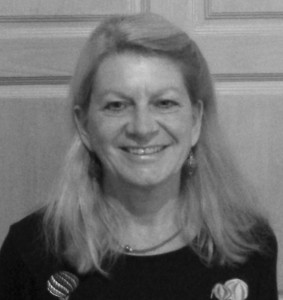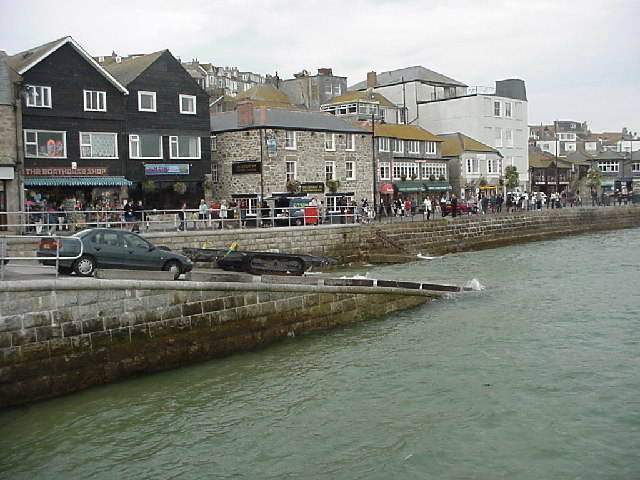21 November 2019
St Ives in Winter
Artists, fishermen, tourists – a community.
By Lynda Goetz
 I was going to write about the ‘attractive challenge’ of sexism posited by Clarissa Farr, the former High Mistress of St. Paul’s School for Girls; or perhaps the issues of historic sex cases now that the case against Julian Assange has been dropped (‘because of the length of time that has passed since the events. Naturally memories fade’), but Prince Andrew has seemingly managed to bring the entire wroth of media, business and public opinion on his head over his past connections with the late Epstein; or possibly the question of abusive and coercive behaviour, following the trial of Kent hotelier Clare Weston for treating her husband ‘like a slave’. In the end, these topics, not to mention the increasingly fantastic offers of ‘freebies’ from all parties participating in the forthcoming elections, were jettisoned in favour of telling you about a magical visit to that little town in Cornwall, St. Ives.
I was going to write about the ‘attractive challenge’ of sexism posited by Clarissa Farr, the former High Mistress of St. Paul’s School for Girls; or perhaps the issues of historic sex cases now that the case against Julian Assange has been dropped (‘because of the length of time that has passed since the events. Naturally memories fade’), but Prince Andrew has seemingly managed to bring the entire wroth of media, business and public opinion on his head over his past connections with the late Epstein; or possibly the question of abusive and coercive behaviour, following the trial of Kent hotelier Clare Weston for treating her husband ‘like a slave’. In the end, these topics, not to mention the increasingly fantastic offers of ‘freebies’ from all parties participating in the forthcoming elections, were jettisoned in favour of telling you about a magical visit to that little town in Cornwall, St. Ives.
Believed by some to be the destination of the narrator in that old riddling rhyme, ‘When I was going to St. Ives’*, this was for many years a busy port (hence the need perhaps for cats to deal with the rats). Today it is, at its centre, a pretty, quaint town beloved of artists and in the summer full of tourists. In mid-November, when the weather is unpredictable and as it happened wet and windy, the town belongs mainly to those who are prepared to put up with the summer invasions and who have chosen it as their home. These would appear in large part to be those fascinated by water and all its associated activities and artists of all sorts from water-colourists to ceramicists, plus, of course those who have managed to open and run successful year-round businesses.
We were there for a weekend course in ‘Expressive watercolour techniques’ at the St Ives School of Painting. The friend with whom I went had been given a choice of courses by her children as a birthday present; I decided on self-indulgence. Interestingly and probably unsurprisingly, the eight of us on the course were nearly all women ‘d’un certain âge’ using the freedom of retirement or the ‘empty nest’ to pursue a long-abandoned interest or taking up something we’d never really found the time for earlier. Clearly, there was a range of abilities and experience, but we were united in our wish to improve and to learn from someone who’d chosen art as a profession and a lifestyle.
Our teacher was Hilary Jean Gibson, an artist and illustrator who has been a tutor at the St. Ives School since 1995. She was informative, inspirational and supportive and after our ‘all-too-short’ two days we came away with some new knowledge, new techniques and the desire to put at least some of them into practice. Perhaps the most fascinating part of the course was venturing outside during a break in the rain to make four quick postcard-size pencil sketches of the beach, cliffs, rocks, sea, sand and waves, just a very short walk from the studio, before returning to use some of the newly-learned techniques to make four monochrome pictures. Tone, texture, light and shade and we managed to convey an idea of that winter beach.
Although the school is in Back Road West, i.e. just behind Wharf Road which runs along the harbour, the window of the studio in which we were working was high enough to give a changing view of the sea as well as the sky. The summer light in St. Ives is one of the draws of this small town for artists; it has to be said that the winter light is no less fascinating. Unfortunately, the ability to get outside for painting is of course somewhat less, particularly in a year which has had as much rain as we have had throughout the U.K. Even getting to a nearby café for lunch proved a somewhat soggy experience, although we did manage a brief stroll along the harbour front in our half-hour stop on Day 2. In a break between showers, the sun made a momentary appearance and we paused to watch dogs and their owners enjoying some exercise amongst the dried-out fishing and excursion boats.
St. Ives is charming, but it is not a place to own a car, certainly not if you live in one of the quaint little cottages which make up the old town area. For the most part there is no parking and much of the town is, in the summer at least, closed to cars without permits. Visitors are directed to edge of town car parks. If, in the relatively early morning of a November day you are trying to find one of the central car parks then you have to be prepared to drive through steep narrow streets, many barely wide enough for modern cars, with some very sharp corners. Locals are, however, helpful with directions when modern technology fails.
Locals these days are not, of course, all Cornish. Many of the residents have some interesting tales of how they ended up in Cornwall, including the landlady of my B&B, who thirty years before had disembarked from her then-husband’s boat with her seven-year-old daughter whilst he continued his round-the-world trip. The artists are drawn from many parts of the country and St Ives has been a mecca for artists for nearly a century. Bernard Leach set up his pottery in the 1920s. The School of Painting was founded in 1938 as the fulfilment of a dream by two young artists, Borlase Smart and Leonard Fuller, who had vowed that if they survived the horrors of the Western Front they would live and paint in St. Ives. By 1939, Barbara Hepworth, Ben Nicholson and Naum Gabo were also based in this pretty Cornish port.
Commercial fishing, which had gone on since the Middle Ages, has long since declined from its heyday in the 19th century, although there is still a lot of tourist fishing, day trips and general boating activities. Once the branch line from St. Erth was built in the later part of 19th century, St. Ives rapidly became a popular holiday destination for the Victorians. That popularity has not declined and the place won ‘The Best UK Seaside Town’ in 2010 and 2011. The community of artists is clearly quite close-knit and, according to our tutor, many of the children of resident artists attend the termly kids’ courses put on by the school. They in turn pursue their careers in this small town almost at the tip of the UK, which houses both the Barbara Hepworth Museum and Tate St. Ives (neither of which, sadly, I had time to visit over the weekend).
The day after we left, those on the course received an email advising us that ‘Someone found a folder at Barnoon car park and kindly handed it in to us. Please get in touch if that’s you and would like it returned’. That was, I knew, my friend’s folder. How brilliant that it had not simply been left on the ticket machine in the hope that someone could get back for it; that someone had actually made the effort to hand it in at the place they assumed / worked out it must have come from. Whatever St. Ives is these days, artists’ colony, former fishing port or tourist destination, it is rather wonderful in this era of virtual communities, rampant ‘individualism’ and an increasing lack of volunteering to come across a place where the sense of community is strong enough for someone to pick up an art folder, make an educated guess as to its provenance and return it.
*”As I was going to St Ives I met a man with seven wives,
Each wife had seven sacks, each sack had seven cats,
Each cat had seven kits; kits, cats, sacks and wives,
How many were going to St Ives?”


